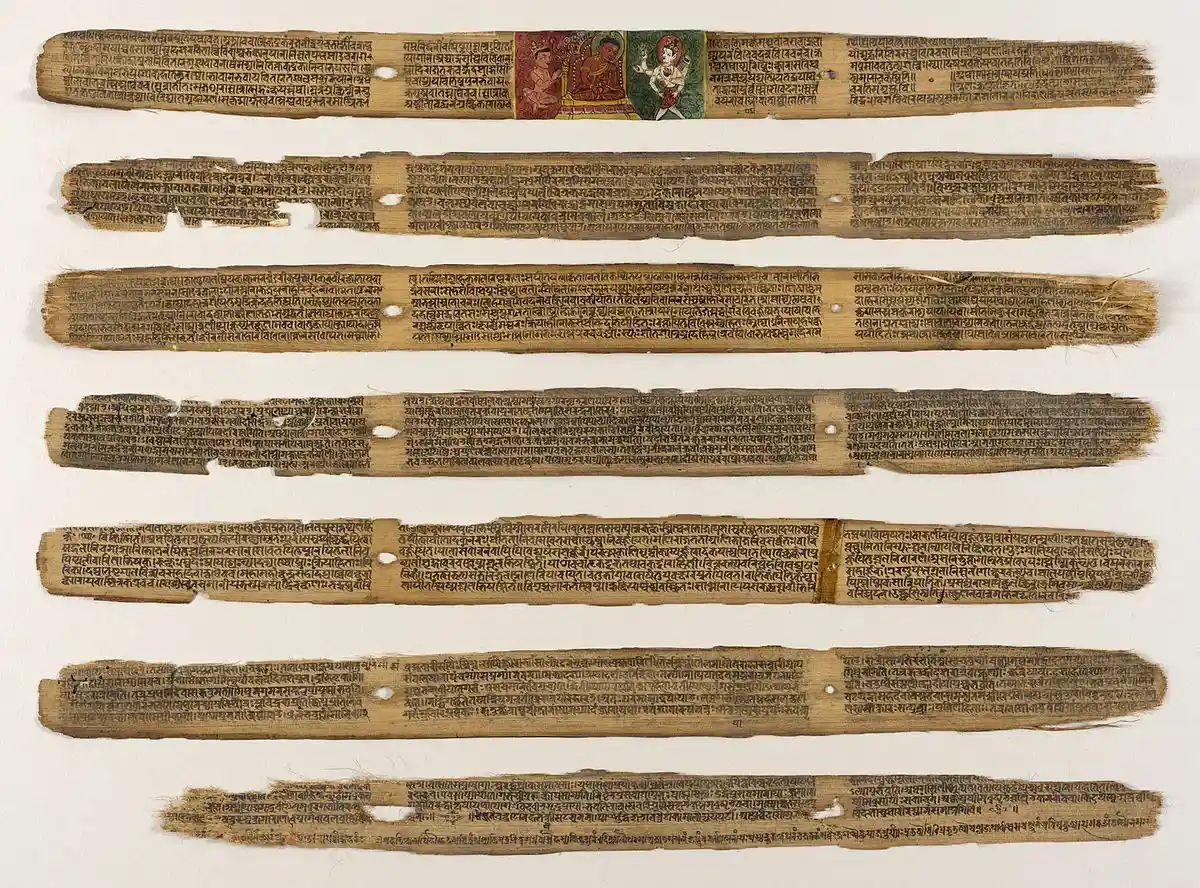Sushruta Samhita: Surgical Knowledge From Over 2000 years ago
How old is the Sushrutha Samhita, one of the oldest medical literature in the history of the world? This Samhita contributed greatly to several fields of medicine today – plastic surgery, fractures, cataract surgery, and several medical conditions along with remedies.

Leaflets from Susruta-Samhita or Sahottara-Tantra, 12th-13th century from Nepal. Image credits: Wikimedia Commons
Sushrut from Kashi, Varanasi, composed the Surutasahita (Sushruta Samhita) he wrote down the teachings of his guru, Divodāsa. Sushrut is mentioned in the Mahabharata as one of the sons of the ancient sage Vishvamitra (a saptarishi), although evidence also suggests that he was Divodāsa's son and disciple. Since he is mentioned in the Mahabharata, which dates around 3000 BCE, it can be assumed that this samhita was written about the same time. It is a Sanskrit work written in the Gupta Brahmi script which dates back to 500 CE.
Sushrut himself was a practitioner of surgery as well as a teacher. A wound, he explained, is the last abrasion of an underlying medical issue that begins with inflammation. He identified six different types of joint dislocations and twelve different types of fractures, as well as fracture therapies that are similar to those used today, such as apposition (similar to bone rods).
The Samhita also has descriptions of the removal of certain flaps to cover defects, as well as recommends physiotherapy to prepare for the operation, contributing to the field of plastic surgery today. Cannabis has been mentioned as a possible anaesthetic. In this samhita, the word rhinoplasty has a historical background; the 'Indian flap,' as it was known in England in the 17th century, is drawn from extensive descriptions in the leaflets.
The literature covers surgical techniques like incisions, probing, tooth extraction, foreign body removal, and more.
It was the work of several hands. It is one of the fundamental texts of Ayurveda, and it was written after the Charaka Samhita, which is a foundation of medicine. It is thought to have begun in the 6th century or even before. The Samhita is divided into 186 chapters and describes 1,120 ailments, 700 therapeutic herbs, and 121 mineral and animal preparations in its current form. It includes paediatrics, otolaryngology, psychology, and other topics, as well as describing eight surgical methods and tools and advising pupils to practise on gourds and dead animals. It is divided into two sections: the purva-tantra, which has five books, and the uttara-tantra, or 'latter portion'. In the 19th century, it was translated into Arabic as kitab shah shun-al-hindi and kitab-i-susurud, as well as into German by Max Müller and Latin by Hessler. In 1907, Kaviraj Kunja Lal Bhishagratna completed the English translation into three volumes.
According to a report published in 2006, traces of oral surgery can be traced back to 5000 BCE in the Sindhu-Saraswati civilization (part Harappan culture, Saraswati is a river referenced in the Rig Veda).
The Rig Vedas reference Queen Vishpala's leg surgery. Historians disagree whether Vishpala was a queen or a horse today, but prosthetic surgery is detailed in a literature from 1500 BCE or perhaps earlier. The Ashvins aided her in a battle or race (the translation is still up for controversy). An iron prosthetic was attached to her leg which she lost in a battle or race (disputed translations) so she could continue. The samhita discusses prosthetic rehabilitation and fitting.
Regardless of its antiquity, the samhita exemplifies the culture it arose from: one of scientific inquiry and experimentation, as well as knowledge exchange.


